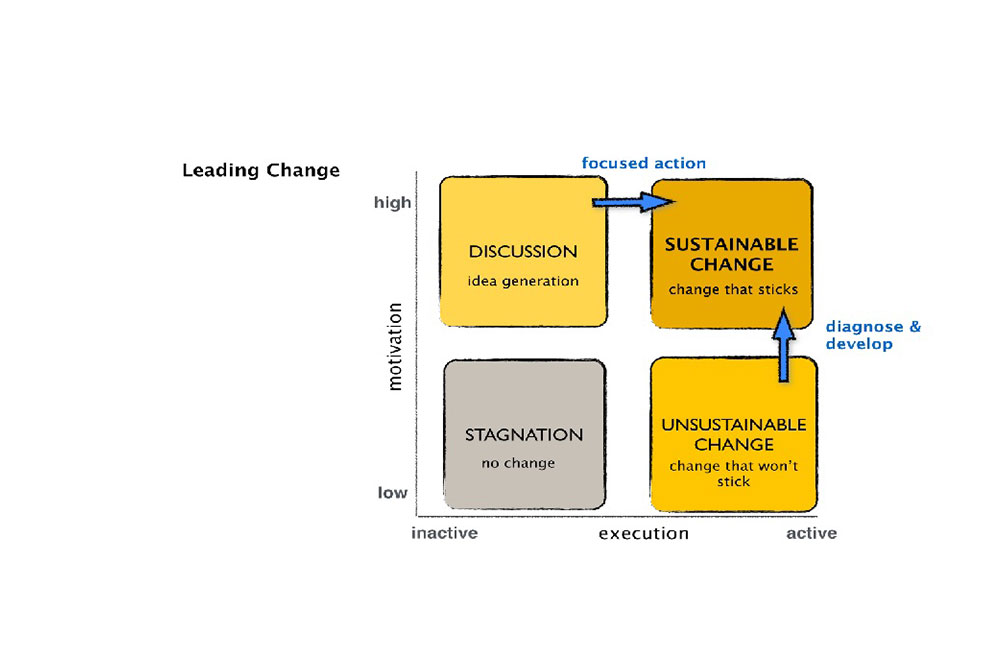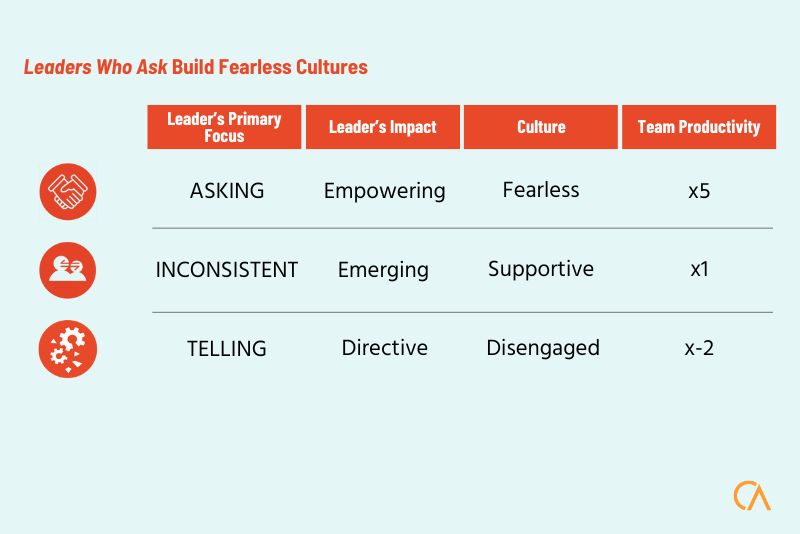
Last week I have gave two keynotes on leading change, an important element of Fearless Leadership.
We are facing a time of unprecedented change and complexity. As leaders we need to respond, and yet up to 70% of all organisational change initiatives fail (research published by Kenneth Blanchard Group of Companies in 2010).
My co-authors (Anneli Blundell and Belinda Cohen) and I have observed change through our own experience and through our work with clients. We have determined that there are two key drivers in leading change successfully.
The first is our level and understanding of motivation and the second is execution – the extent to which we are taking action.
Let’s explore this through the Leading Change model above.
Firstly, let’s consider a situation where your motivation for change is low; your execution is also low – you have been inactive. Not surprisingly, this leads to stagnation – no change happens here.
Think about Sunday morning… A lack of motivation to get out of bed combined with a failure to move your body, leads to an extended lie-in. This could be described as your ‘comfort zone’, and can apply to teams or whole organisations.
Contrast that with another scenario where your motivation is high but you are still not taking any action – discussion. Belinda calls this ‘some day isle’. Some day I’ll get that new job. Some day we’ll improve our fulfillment process. Wheels are spinning. People want to change; they are talking about it; generating ideas, and yet the focused action required to make it happen has not been taken.
When you focus on execution (lots of action is happening), and yet the underlying motivation is low, you may be seeing positive changes but struggling to make the changes stick. Unsustainable change occurs in the absence of the required motivation. Changes are made because we ‘should change’ and not yet the motivation required to maintain the change is not there.
The vital ingredient of motivation is the internal motivation that allows our positive action to be sustainable over time and become a new habit. To be successful, we need to know what aspect of motivation must be ignited for the change to become sustainable.
When motivation is high and actively executed, sustainable change is achieved and we have change that sticks.
Think about a change that you are facing right now. Where are you on the Leading Change model? Is it focused action that you need? Or do you need to diagnose your motivation (understand your change profile) and develop your change flexibility? Leave your comments below.
STAY IN THE LOOP





